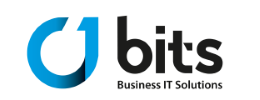Barcode | QR Code | RFID | NFC | Barcode Scanner | Barcode Printing
A barcode is a graphical representation of data used to identify a product or item. It is a series of parallel lines of varying widths printed on a product or item that can be scanned with a barcode reader or scanner to quickly and accurately retrieve the information encoded in the barcode. The most common barcode type is the linear barcode, which uses a series of vertical lines to encode the data. Other types of barcodes include two-dimensional barcodes that use a grid of squares or dots (QR Code) and RFID tags that use radio waves to transmit information.
There are different methods and technologies to create and read barcodes. The best known method is the Universal Product Code (UPC), which is used in North America and other countries to mark products in stores and other retail environments. The European Article Number (EAN) is another popular method used in Europe and other parts of the world. Both methods use linear barcodes that can be easily scanned and decoded by barcode readers.
Other technologies used in conjunction with barcodes include radio-frequency identification (RFID) tags, which use radio waves to transmit information, and near-field communication (NFC) technology, which allows devices to communicate with each other when they are in close proximity. These technologies are often used in conjunction with barcodes to provide additional information and functionality, such as the ability to make payments or access online content.
Overall, the idea of a barcode is to provide a simple and efficient way to identify and track products and items using graphical representations of data. Barcodes and related technologies are becoming increasingly popular as they offer numerous benefits across a wide range of industries and applications.
BITS experts use barcodes as well as related technologies in a wide range of projects. A selection of case studies and references can be found below.
“We are happy to support you with your digital challenges and look forward to hearing from you without obligation.”
Marc Schallehn, Managing Director BITS GmbH

Gerne unterstützen wir Sie bei Ihren IT Projekten. Ich freue mich über Ihre Kontaktaufnahme.
Selection of case studies and references
Establishment and operation of a European trading platform for pharmaceuticals
Together with arex PHARMA GmbH, a specialist in the international trade and distribution of European pharmaceuticals, BITS GmbH has established the EU-wide trading platform Rxchange for pharmaceutical products as a strategic IT partner.


